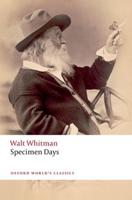Publisher's Synopsis
The book you are now holding is a literary artifact, essentially faithful to the original text of Don Browns' hand-written manuscript.
Keep in mind that Don's manuscript was composed "then." Don's China, during the 1930s/'1940s, had been wracked by decades-long warfare. Subsequent revolution brought sweeping social and jolting political alignments that demanded "restructuring" to reflect their new "socialist cultural reality."
Such was the case in post-bellum China under the newly ascendent Communist government. Control of language became an important feature. In 1979, the People's Republic of China replaced the long-used and familiar 19th century Wade-Giles system of romanizing--i.e. transcribing, transliterating and pronouncing standard Mandarin Chinese into English using the familiar Roman alphabet.
Proper nouns denoting once-familiar cities, regions and geographic locations were arbitrarily reassigned the new Pin Yin notation; as a result they no longer correspond with today's maps and charts.
"Peking" became "Bejing." "Tinsing" became "Quing Dao."
We've included the original Wade-Giles spellings followed by the contemporary Pin Yin pronunciations.
Additionally, contemporary graphic and digital media communication styles differ. Once widely applied forms of diacritical punctuation--used as pronunciation keys in the transliteration of foreign languages in popular media are rarely used, if at all.
In an effort to facilitate following Don's wide-ranging sea-going career, additional page-below footnotes have been used to provide context items and events specific to Don's narrative.
Follow Don's wartime geographic locations along China's contemporary coastlines depicted by today's 21st Century cartography on page 122.









